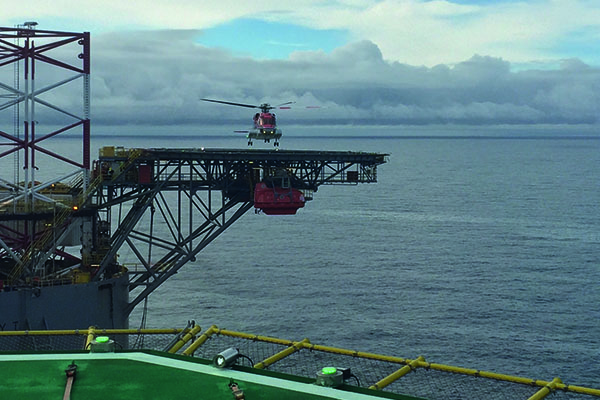A day in the life of a North Sea helicopter pilot…..
A day in the life of a North Sea helicopter pilot…..
Being a pilot is a challenging but hugely rewarding experience – ensuring your passengers reach where they need to be safely and securely requires a great deal of planning and focus. Today, to Mark St Andrew’s day we’re highlighting what life is like for some of our pilots in Scotland. If you’re considering a career in aviation, Ewan Weatherhead, Pilot at CHC Helicopter and Chair of the BALPA Company Council, helpfully explains what you can expect in a typical day flying in the North Sea.
In aviation, you won’t be surprised to learn that there are a lot of early starts. Flying in the North Sea is no different. Our customers are large energy companies – traditionally oil and gas, although increasingly offshore renewables companies – and they need to rotate their offshore staff frequently, which means we get out of bed early. Flight times are usually between 07:00 and 22:00.

With well over 100 staff on a manned production rig, and over 500 personnel on development projects, it takes a lot of flights by a typical 19 seat helicopter. There are around 40 large helicopters flying in the North Sea alone. It’s a huge operation.
After a few strong cups of coffee, our day starts with the two crew members, the Captain and Co-Pilot, getting together a few hours before departure to plan the flight. A typical flight includes several offshore landings, which means there’s plenty to discuss. We consider the availability of alternative landing zones for each sector, as well as the availability of fuel on the Heli-decks and the type of approach required. Only larger drilling rigs and established production rigs tend to have fuel, so we need to plan accordingly.
Whilst waiting for details on the number of passengers and any equipment we will be carrying, the crew don their survival equipment – an immersion suit and life jacket – before returning to adjust fuel levels in the aircraft. After confirming the load and assessing the weather conditions and suitability for flying, the captain will accept the flight.
Next the Co-pilot will conduct pre-flight checks whilst the Captain visits engineering and briefs the passengers in the gate. Once the crew is satisfied with their pre-flight checks and confident they can proceed safely, passengers are invited to arrive at the helicopter and board.
Then, it’s time to fly.

On board the aircraft, one pilot will be monitoring equipment and will complete the start checks whilst the other pilot conducts the taxi process. When we are clear to take off, we climb to about 3000 feet before the auto pilot is engaged and we begin the cruise portion of the flight. This section of the flight tends to last anywhere from 30 minutes to 2.5 hours. During the cruise, one pilot will be monitoring the systems, talking to different air traffic control and offshore agencies, conducting fuel and navigation checks, and calculating the weight of the passengers and fuel. The other pilot, the pilot flying, is solely responsible for ensuring a safe flight path for the aircraft and directing the flight.

As we approach our destination, if we can see the landing site, the pilot flying will resume manual flying to manoeuvre the aircraft on to its final landing area, avoiding ships, rigs and other aircraft working in the same area. If we can’t see the landing site, both pilots work together to descend the aircraft using the weather radar, altimeter and the GPS. Using a set procedure the aircraft can be put less than a mile from the destination at a height of only 200 feet from the sea. At this point we must be able to see the rig or we have to terminate the approach. The challenge here is the destination may well be moving! The North Sea is a wet and windy place, after all.

In rough seas with an average of 6m waves, great care is required. The helideck may only be slightly bigger than the aircraft, meaning fine margins. Who lands the aircraft is determined by the orientation of the installation, as only one pilot will have the landing references on approach. This can differ day to day for the same installation, with different winds, or depending on obstructions on the final approach.

After safely landing on the installation and swapping passengers over, the crew will then check the weather again, refuel, and fly the aircraft back to base. There isn’t a moment where your full attention isn’t required, but nothing beats the feeling of returning safely and seeing your passengers disembark and head home after a hard days work.

It’s hugely rewarding flying in the North Sea, and it’s also an enjoyable experience. I rarely spend nights away from home, meaning I get to spend time with my nearest and dearest. And the sense of camaraderie is second to none. You get to know all of the other pilots extremely well, flying with your friends and sharing experiences you will never forget. I couldn’t recommend it more. you have to try it.
